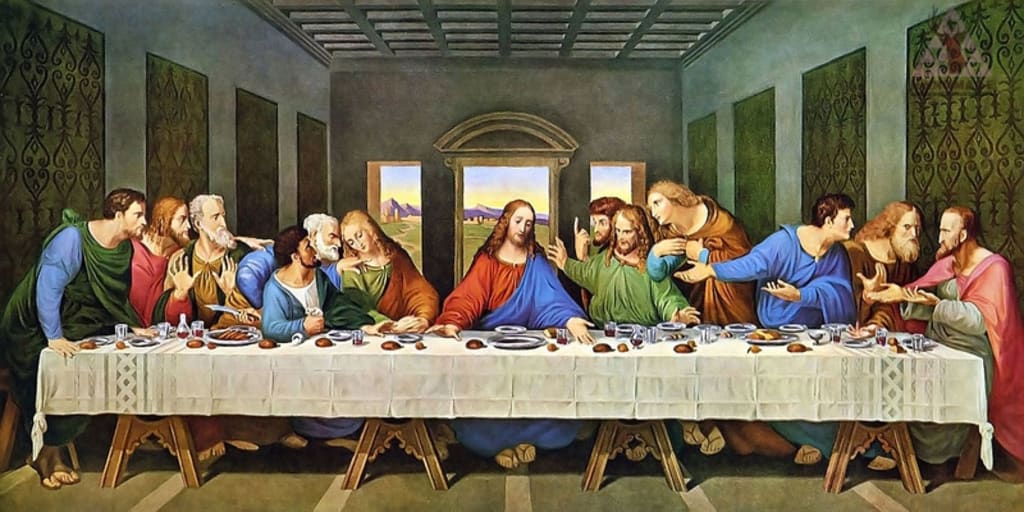The Last Supper
A Painting that is Worth Seeing in Person

The Last Supper
The Last Supper is one of the most famous paintings in the world. It was painted by Leonardo da Vinci between 1495 and 1498 on the wall of the refectory of the Convent of Santa Maria delle Grazie in Milan, Italy. The painting depicts the scene of the Last Supper of Jesus with the Twelve Apostles, as it is told in the Gospel of John – specifically the moment after Jesus announces that one of his apostles will betray him.
The painting is a masterpiece of Renaissance art. It is notable for its use of perspective, its realistic depiction of human emotion, and its intricate symbolism. The figures in the painting are arranged in a semicircle around Jesus, who is seated in the center. The apostles are all reacting in different ways to Jesus' announcement, ranging from shock and disbelief to anger and betrayal.
Leonardo used a number of techniques to create a sense of realism in the painting. He studied the human body in great detail, and he used his knowledge of anatomy to create figures that are both lifelike and expressive. He also used light and shadow to create a sense of depth and perspective.
The Last Supper is also rich in symbolism. The bread and wine on the table, for example, are symbols of the Eucharist. The twelve apostles represent the twelve tribes of Israel. And the gesture of Jesus pointing to his heart is a symbol of his love for his disciples.
The Last Supper is a complex and fascinating painting that has been the subject of much study and interpretation. It is a work of art that continues to move and inspire people centuries after it was created.
Here are some of the things that make The Last Supper such a remarkable painting:
The use of perspective. Leonardo used a technique called linear perspective to create a sense of depth in the painting. The figures are arranged in a semicircle around Jesus, who is seated in the center. The vanishing point of the perspective is located directly behind Jesus' head, which creates a sense of focus and authority.
The realistic depiction of human emotion. Leonardo was a master of capturing human emotion in his paintings. The apostles in The Last Supper are all reacting in different ways to Jesus' announcement, ranging from shock and disbelief to anger and betrayal. Leonardo's use of facial expressions, body language, and gestures is incredibly realistic and evocative.
The intricate symbolism. The Last Supper is a rich and complex painting that is full of symbolism. The bread and wine on the table, for example, are symbols of the Eucharist. The twelve apostles represent the twelve tribes of Israel. And the gesture of Jesus pointing to his heart is a symbol of his love for his disciples.
The sheer size of the painting. The Last Supper is a massive painting, measuring 460 cm × 880 cm (180 in × 350 in). It is one of the largest and most ambitious paintings ever created.
The Last Supper is a masterpiece of Renaissance art that continues to be admired and studied by people all over the world. It is a painting that is full of beauty, emotion, and symbolism. If you ever have the opportunity to see it in person, I highly recommend it.
About the Creator
Enjoyed the story? Support the Creator.
Subscribe for free to receive all their stories in your feed. You could also pledge your support or give them a one-off tip, letting them know you appreciate their work.





Comments
There are no comments for this story
Be the first to respond and start the conversation.